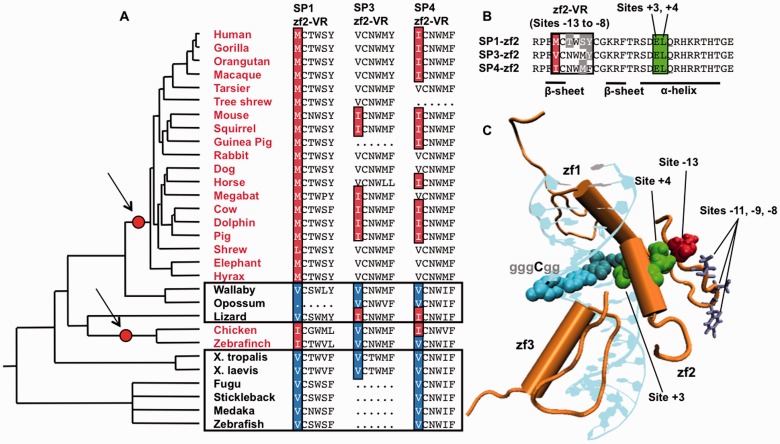Fig. 1.—
Evolution of SP transcription factors. (A) SP1 binds preferentially to the GC box in placental mammals and birds (red) and to the ancestral GA box consensus in other vertebrates (black). Modifications in binding motif preferences along the phylogeny are denoted by red-filled circles. “Variable regions” in zinc finger 2 (zf2-VR), containing all nonconserved sites in zinc finger 2 within vertebrates, are shown for SP1, SP3, and SP4. Site –13 (highlighted) is putatively responsible for the change in SP1 binding preferences. (B) Zinc finger 2 (zf2) of human SP1, SP3, and SP4. Each zinc finger contains an alpha-helix and two beta sheets (Philipsen and Suske 1999; Dhanasekaran et al. 2006). Red and gray columns denote sites nonconserved across vertebrates; all are contained in the boxed variable region (zf2-VR), comprising sites −13 to −8. Site +3 binds directly to the convergent A/C fourth site of the GC box. (C) SP1 binds to the DNA via zinc fingers 1–3 (zf1-zf3), where zf2 binds to the three central nucleotides of the GC box (GGGCGG) (Philipsen and Suske 1999; Bouwman and Philipsen 2002; Dhanasekaran et al. 2006). Site −13 (red) is only 9.5 Å from site +3 (green) and directly contacts the neighboring site (site +4) (Bouwman and Philipsen 2002; Oka et al. 2004; Dhanasekaran et al. 2006).

